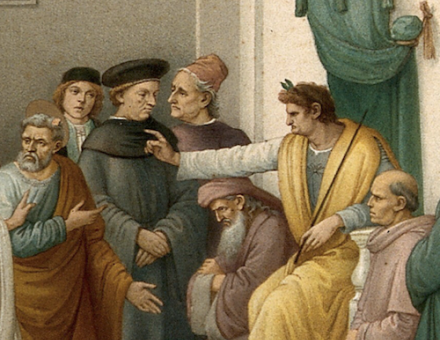Remembering the Forgotten
In this round-up of historical fiction: Thomas Hardy’s housemaid, an Icelandic boy witnesses the 1918 Spanish flu epidemic and a young Englishwoman in revolutionary Paris.
 We move from Iceland to Paris, from Thomas Hardy to Georges Danton. Revolutions come and Icelandic volcanoes go and the historical novel genre greedily chases them all. Our broad theme is the marginal – figures and places that for one reason or another have been ignored, silenced or forgotten. The historical novel specialises in reclaiming and recollecting in this way, focusing our attention on those sometimes ignored by the mainstream of historical narration. So here we have a near-silent cineaste living on the ‘edge’ of European modernity, a jilted mistress watching the violent birth of the 19th century and a housemaid reporting on the final days of one of Britain’s greatest writers.
We move from Iceland to Paris, from Thomas Hardy to Georges Danton. Revolutions come and Icelandic volcanoes go and the historical novel genre greedily chases them all. Our broad theme is the marginal – figures and places that for one reason or another have been ignored, silenced or forgotten. The historical novel specialises in reclaiming and recollecting in this way, focusing our attention on those sometimes ignored by the mainstream of historical narration. So here we have a near-silent cineaste living on the ‘edge’ of European modernity, a jilted mistress watching the violent birth of the 19th century and a housemaid reporting on the final days of one of Britain’s greatest writers.
There has been something of a vogue recently for the servants’-eye view, from Downton Abbey and Upstairs, Downstairs to Longbourn, Jo Baker’s version of Pride and Prejudice (2013). Perhaps prompted by Alison Light’s magnificent Mrs Woolf & The Servants (2007) and with the motif of the unseen and the unsaid from Ishiguro’s The Remains of the Day (1987) always in the background, these novels scrutinise telling moments and important figures. Such a narrative is a way of reconciling social history with literary history, of reinvigorating the ‘country house’ genre by paying attention to those who, in the words of Damien Wilkins’ narrator, are ‘invisible’ yet ‘somehow part of it all, another stone in the path, in the damp wall’. Max Gate (Aardvark Bureau) tells the last days of Thomas Hardy through the blunt voice of housemaid Nellie Titterington. The struggle for Hardy’s memory is compelling stuff: his notebooks and manuscripts were burnt by his executors, his ashes buried in one place (Westminster Abbey) and his heart in another (his home parish of Stinsford) and The Early Life of Thomas Hardy published by his second wife in the same year of his death. It is a story of intrigue and strangeness, as the great writer’s attempt at curating his legacy and constructing his image for posterity meets public commemoration and politics. The great novel of Hardy’s death and the struggle for his memory is W. Somerset Maugham’s Cakes and Ale (1930), which if you have not read recently, you should return to soon. Like Maugham, Wilkins approaches Hardy tangentially, as if our understanding of such writers cannot be augmented if we look straight at them. For both, this method provides a way of thinking about memory and the value of writing. Wilkins’ novel renders a very engaging and interesting story about the value of reputation and the very material struggles over legacy. It is sad and elegiac, a slight but pleasing read.
In similar melancholic mood, the Icelandic author Sjón’s strange and valedictory Moonstone: The Boy Who Never Was (trans. Victoria Cribb, Sceptre) takes us to Reykjavik in 1918 and the coming of Spanish influenza. The central character, Máni Steinn, wanders the streets of the increasingly empty city, consuming as much cinema as he can. He acts as a strange kind of filter for the historical experience of the epidemic, participant and observer. The novel balances discussion of nationhood, sexuality and aesthetics. Sjón gently meditates upon the development of Iceland, of Europe and of a modern world understood through popular culture, in this case the cinema. It is a mournful book, as much in many ways about exile (internal and external) as about film. Sjón has said that he is drawn to the ‘silences in the past’ and this delicate novel carefully exposes these absences without seeking to disturb or control them. It is a lovely, spare, lyrical volume that – despite, or perhaps because of, its brevity – contains much beauty.
By contrast Hallie Rubenhold’s The French Lesson (Doubleday) is an engaging romp around late 18th-century Paris, blending elements of sensation, the novel of sensibility and the novel of revolution. Key writers lurk in the background – de Laclos, Fielding, Lennox, Dickens and Burney – and at times the novel is delightfully arch and delicate. It is a light read, fun to skip through, without much to pause over (this sounds like a criticism, but is not). The plot is a confection recounting many key events of the early part of the French Revolution and there is much to admire. Rubenhold sketches revolutionary Paris marvellously and there is an admirable lightness of touch.
Jerome de Groot is Senior Lecturer in the Arts, Languages, and Cultures at the University of Manchester.




